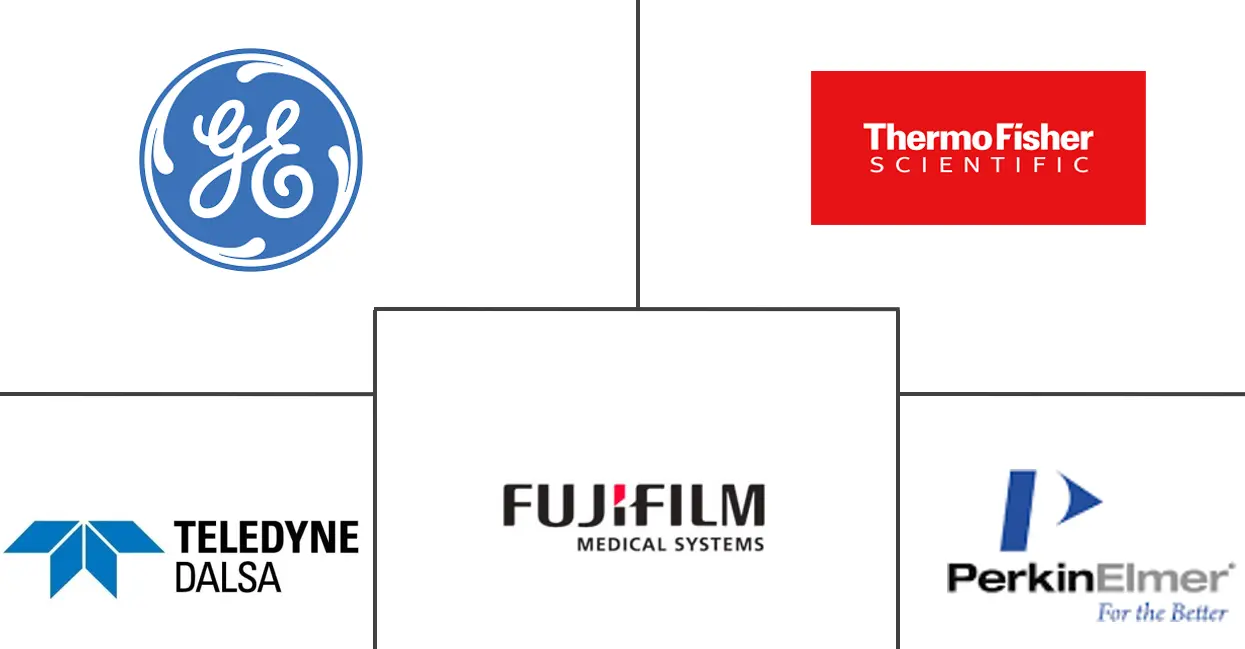Analytical X-ray Instrumentation Market Size and Share
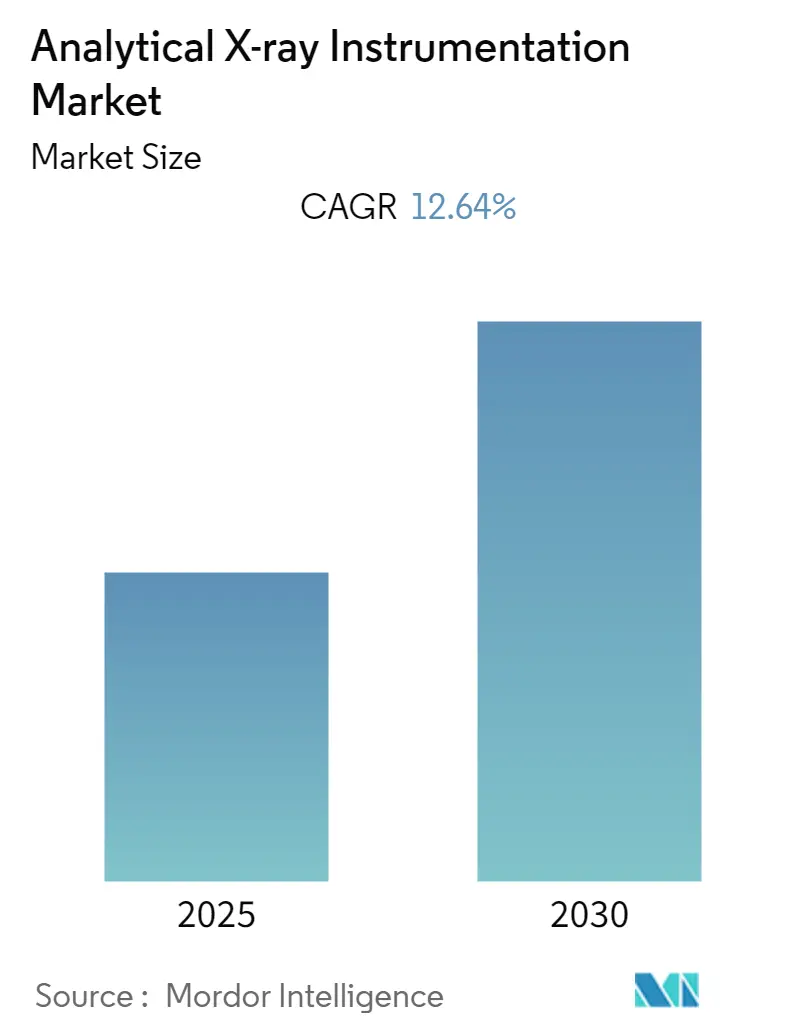
Analytical X-ray Instrumentation Market Analysis by Mordor Intelligence
The Analytical X-ray Instrumentation Market is expected to register a CAGR of 12.64% during the forecast period.
- There have been several technological advances in digital X-rays. For example, wireless and mobile X-ray systems allow healthcare practitioners to examine a patient at their bedside when they cannot be moved to the radiology room.
- Digital x-rays have become important in the field of dental science, helping dentists diagnose dental problems. The most recent development is the introduction of portable x-rays. Portable X-rays, such as home X-rays, help frail patients avoid hazardous hospital trips. These advancements have been catering to the significant demands in the market by making it easier for the patient to undergo clinical procedures.
- The development of low-energy X-ray systems has increased their use in various application areas. The applications of X-rays in security applications have increased considerably over the past few years. Baggage and personal scanners augment the deployment of X-ray tubes for object detection. Innovations in technology have facilitated the manufacturing of high-power X-rays, which are used in quality control systems in various industries.
- Technological advancements in the X-ray tube dimensions and new and enhanced imaging techniques based on X-rays are being introduced in the market. These technological breakthroughs have assisted the development of new X-ray tubes that can make the overall processes more efficient and can significantly enhance accuracy in numerous applications. The trend toward smaller and more densely populated electronics components and the emergence of micro-electromechanical systems (MEMS) and micro opto electromechanical systems (MOEMS) led to the development of nano-focus X-ray technology.
- However, high initial costs and stringent regulations are adding significant challenges to the studied market. Manufacturers of X-ray imaging equipment must follow the current electronic product radiation control (EPRC) regulations and procedures or offer a declaration of conformity to the equivalent International Electrotechnical Commission (IEC) standard. FDA has determined that industry conformance to certain IEC standards would offer, at a minimum, the same level of protection of public health and safety from electronic radiation as certain EPRC regulatory standards.
- After COVID-19, WHO laid out standard specifications for mobile radiographic digital equipment. The mobile radiographic equipment consists of multiple components, such as an X-ray generator, an X-ray tube, a tube telescopic arm support, etc. The equipment should have an X-ray tube support with a telescopic arm. The tube stand must be fully counterbalanced for rotation in all directions. The standards for product performance included IEC 60336:2005 X-ray tube assemblies for medical diagnosis. This is expected to further drive the market studied.
Global Analytical X-ray Instrumentation Market Trends and Insights
Healthcare Segment is Expected to Hold Significant Share
- In the medical sector, dental applications that require smaller and shorter scans are found to be using stationary X-ray tubes for imaging. According to the Listerine Professional, oral conditions are the most faced health issues affecting 3.9 billion people on average globally. Therefore, in the dental sector, the primary demand for X-ray imaging, which does not require rotating anode X-ray tubes, is due to stationary tubes that are suitable for imaging purposes.
- The cases of breast cancer are high globally. For instance, the American Cancer Society's estimates for breast cancer in the United States for 2022 reported that about 287,850 new cases of invasive breast cancer would be diagnosed in women. Around 51,400 new cases of ductal carcinoma in situ (DCIS) would be diagnosed, and about 43,250 women are expected to die from breast cancer. This rise in breast cancer incidences has resulted in increased demand for diagnosing them, giving a push to the adoption of mammography.
- In high-resolution devices used in general X-ray applications, such as mammography, angiography, and computed tomography (CT), rotating anode X-ray tubes are used. Thus, in the medical sector, therapy applications for various diseases demand the use of rotating anode X-ray tubes. However, the beam has to be safely focused to avoid the ill effects of extra X-rays on the patient.
- Computed tomography (CT) is where a volume dataset of an object is reconstructed from a series of X-ray images taken from various angles around an object. It is best known for its use in medicine for patient diagnosis and aerospace and electronics for non-destructive testing, evaluating defects and inner structure, and verifying product dimensions. These industries require inspection resolutions down to the nanometer scale. As the miniaturization of electronic devices has become predominant, there has been an increasing requirement for CT measurements at 5 µm resolution or less.
- The spot size of the X-ray tube affects the measurement resolution directly. But there are no internationally accepted measurement methods or standards for X-ray tube spot sizes below 5 µm. X-ray equipment manufacturers apply proprietary measurement methods leading to inconsistent results. Therefore, new approaches based on traceably characterized gauges for determining the spot size, position, and shape are being developed and will be introduced as an internationally recognized standard for these spot measurements.
- In May 2022, the EMPIR project Measurement of the focal spot size of X-ray tubes with spot sizes down to 100 nm (NanoXSpot, 18NRM07) was developing new standard practices for characterizing X-ray focal spots to a higher level of accuracy than achieved currently. The project would strengthen the competitiveness of European X-ray system manufacturers. It is expected to benefit many industries that require analyzing nano- and microstructures with metrological CT systems, including pharma-biotech, semiconductors, aviation, and automotive industries.
- Moreover, the growing demand for CT scanners in developing countries is expected to drive demand for analytical X-ray systems. For instance, according to OECD in Ireland, the usage of CT scanners rose to 102 in 2021 compared to 99 in 2018.
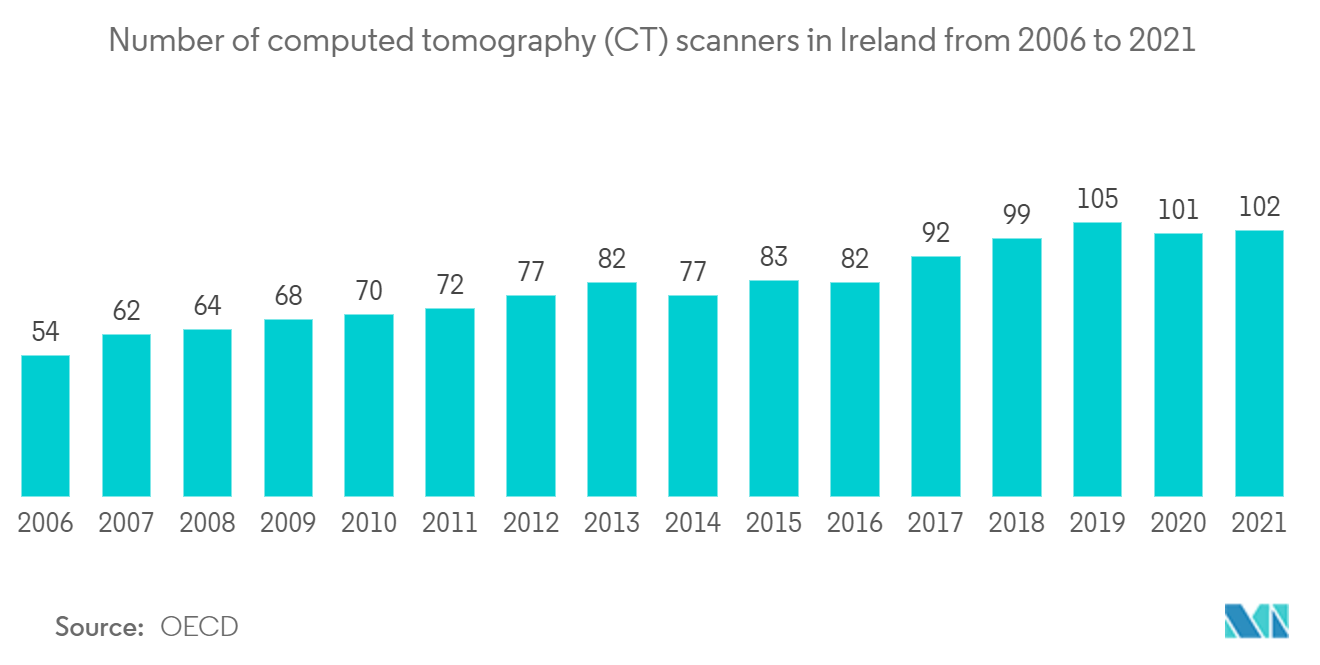
North America is expected to hold Significant Market Share
- The United States is witnessing an increase in the geriatric population as well as a surge in the incidence of chronic diseases because of sedentary lifestyles and unhealthy eating habits. According to census data, as of July 2021, 16.5% of the US population of 328 million people, i.e., 54 million, were over the age of 65. It is projected that by 2030, the number will increase to 74 million. The number of people over 85 years of age is growing even faster. Moreover, rising medical infrastructure developments with the increase in medical facilities are expected to propel the demand for the medical X-ray tube market in America.
- According to the National Cancer Institute, in 2018, an estimated 1,735,350 new cases of cancer were diagnosed in the United States. Furthermore, the institute forecasts that per year, the number of new cases of cancer is 439.2 per 100,000 men and women. It also predicts that the number of new cancer cases per year is expected to rise to 23.6 million by 2030 in the United States. The rise in cancer incidences resulted in the increased demand for diagnosing them, giving a push to the adoption of mammography.
- For instance, EOS imaging, a global medical device company, installed its fourth EOS system at the Hospital for Special Surgery (HSS) in New York City, United States, which offers a low dose full-body, stereo-radiographic images of a patient in a functional position.
- Companies such as Samsung Electronics, Cannon, and Fujifilm Medical Systems USA, are strategically investing in producing new X-ray systems, which use X-ray detectors and X-ray tubes, and produced its mobile X-ray systems, which use X-ray detectors. The increase in the production of these systems is anticipated to increase the use of analytical X-ray systems.
- In March 2022, Richardson Electronics Ltd, a global provider of engineered solutions for diagnostic imaging equipment, announced the issuance of US Patent No. 11,257,652, which was the result of the company's innovative healthcare solutions to replace X-ray tube components. Richardson's newly-patented solution offers a unique conductive coating for the X-ray tube insulator. The insulator is easier to manufacture, increases recyclability, and prevents component failure. The coating is able to be advantageously applied at a comparatively low temperature that does not negatively impact sensitive parts of the insulator. This solution also reduces waste, as the coating can be reapplied several times to the ceramic components.
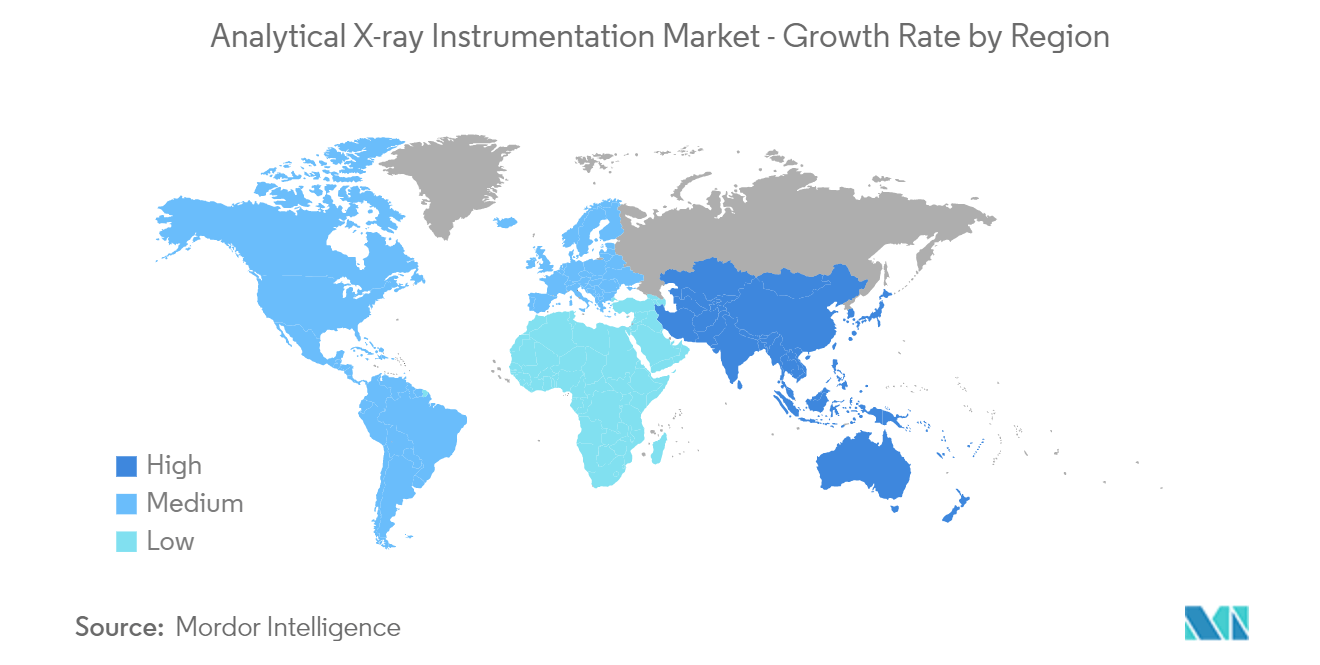
Competitive Landscape
The presence of major players governs competitive rivalry in this industry. This market can attain a sustainable competitive advantage through innovation, owing to the growing need for differentiated products. The market is moderately fragmented, with players like Varex Imaging Corporation, Thales Group, Fujifilm Medical Systems, Teledyne DALSA Inc., etc.
- March 2022: Canon Medical Systems Corporation entered an agreement to acquire Nordisk Røntgen Teknik A/S, a Danish company with advanced technology for developing and manufacturing diagnostic X-ray systems. Through this acquisition, Canon Medical opened up access to European-based technology, development, and manufacturing for advanced imaging solutions.
- May 2022: Aidoc, a provider of healthcare AI solutions, announced an agreement with Gleamer, a French MedTech company focused on using AI technology in radiology to integrate Gleamer's BoneViewsolution for X-rays. The onboarding of Gleamer's AI BoneViewX-ray solution is expected to expand Aidoc's venture into the X-ray modality.
Analytical X-ray Instrumentation Industry Leaders
-
GE Healthcare
-
Thermo Fisher Scientific Inc.
-
Fujifilm Medical Systems
-
Teledyne DALSA Inc.
-
PerkinElmer Inc.
- *Disclaimer: Major Players sorted in no particular order
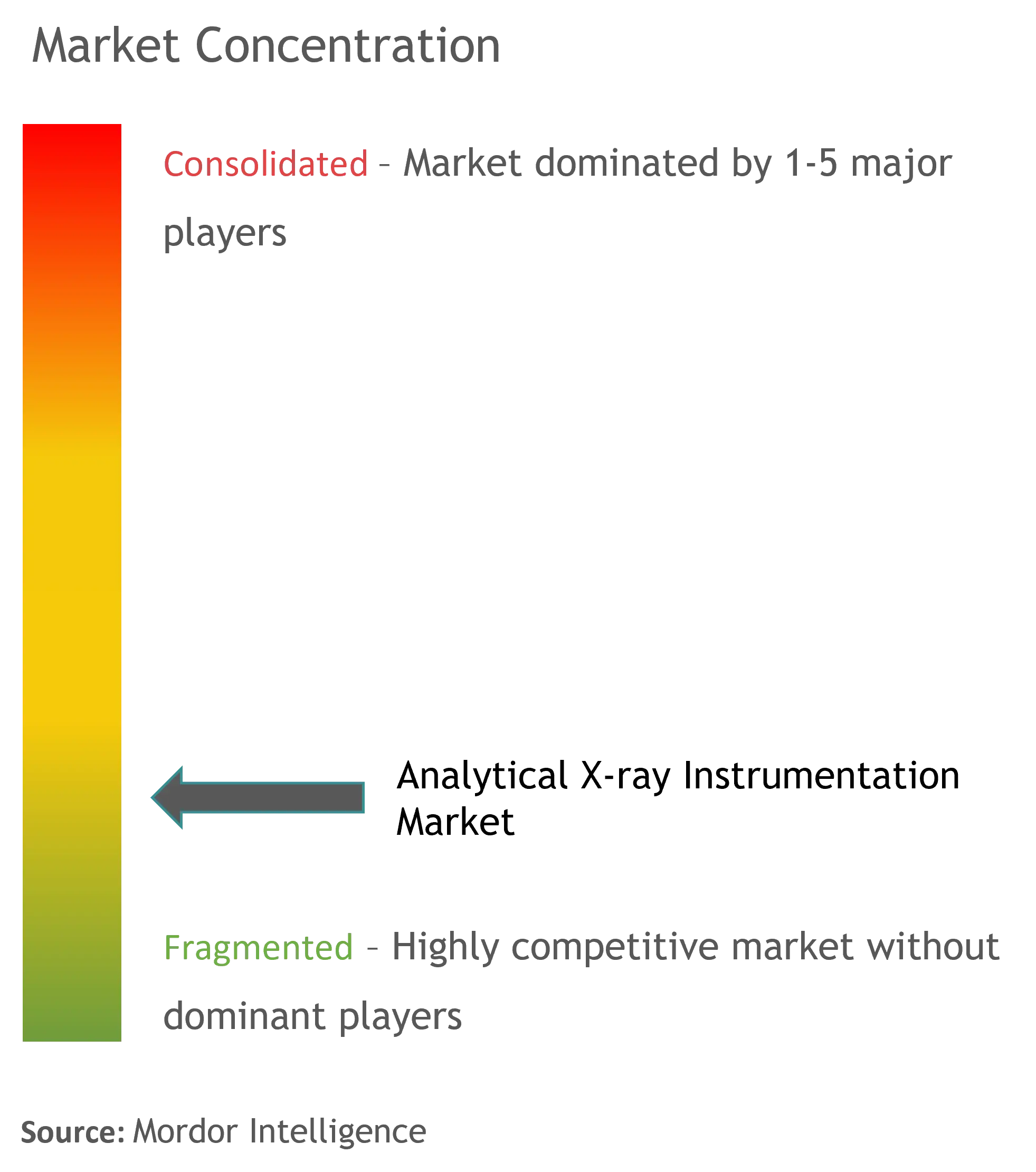
Recent Industry Developments
- April 2022: Viscom AG presented a selection of its latest microfocus X-ray tubes at Control in Stuttgart, Germany. Due to their flexibility, a previously unattained spectrum of tasks can now be covered using the same X-ray source, from the inspection of small, filigree objects and time-optimized series inspections to the radiography of large and massive components.
- March 2022: Canon Medical Systems agreed to acquire Nordisk Rntgen Teknik (NRT), a Danish medical equipment manufacturer, to strengthen its global X-ray business. NRT develops, manufactures, and distributes advanced multipurpose X-ray fluoroscopy systems and general radiography systems. Canon Medical intends to use the acquisition to improve its technology, development, and manufacturing of advanced digital imaging solutions in Europe.
Global Analytical X-ray Instrumentation Market Report Scope
The scope of the study includes the application of analytical X-ray systems in medical applications, with the prominent industries in the scope being manufacturing, healthcare, food, aerospace and defense, and other end-user industries, comprising government, security, and research and development labs in different geographies. The market sizes and forecasts are provided in terms of value (USD million) for all the above segments.
The study also tracks the key market parameters, underlying growth influencers, and major vendors operating in the industry, which supports the market estimations and growth rates during the forecast period. The study analyzes the impact of the COVID-19 pandemic on the ecosystem.
| X-ray Tube |
| X-ray Detectors |
| Monochromatic |
| Healthcare |
| Manufacturing |
| Food |
| Aerospace and Defense |
| Other Applications |
| General Radiography |
| Chest Imaging Application |
| Cardiovascular Imaging |
| Dental Applications |
| North America |
| Europe |
| Asia-Pacific |
| Rest of the World |
| By Component Type | X-ray Tube |
| X-ray Detectors | |
| Monochromatic | |
| By End User | Healthcare |
| Manufacturing | |
| Food | |
| Aerospace and Defense | |
| Other Applications | |
| By Application | General Radiography |
| Chest Imaging Application | |
| Cardiovascular Imaging | |
| Dental Applications | |
| By Geography | North America |
| Europe | |
| Asia-Pacific | |
| Rest of the World |
Key Questions Answered in the Report
What is the current Analytical X-ray Instrumentation Market size?
The Analytical X-ray Instrumentation Market is projected to register a CAGR of 12.64% during the forecast period (2025-2030)
Who are the key players in Analytical X-ray Instrumentation Market?
GE Healthcare, Thermo Fisher Scientific Inc., Fujifilm Medical Systems, Teledyne DALSA Inc. and PerkinElmer Inc. are the major companies operating in the Analytical X-ray Instrumentation Market.
Which is the fastest growing region in Analytical X-ray Instrumentation Market?
Asia-Pacific is estimated to grow at the highest CAGR over the forecast period (2025-2030).
Which region has the biggest share in Analytical X-ray Instrumentation Market?
In 2025, the North America accounts for the largest market share in Analytical X-ray Instrumentation Market.
What years does this Analytical X-ray Instrumentation Market cover?
The report covers the Analytical X-ray Instrumentation Market historical market size for years: 2019, 2020, 2021, 2022, 2023 and 2024. The report also forecasts the Analytical X-ray Instrumentation Market size for years: 2025, 2026, 2027, 2028, 2029 and 2030.
Page last updated on:
Analytical X-ray Instrumentation Market Report
Statistics for the 2025 Analytical X-ray Instrumentation market share, size and revenue growth rate, created by Mordor Intelligence™ Industry Reports. Analytical X-ray Instrumentation analysis includes a market forecast outlook for 2025 to 2030 and historical overview. Get a sample of this industry analysis as a free report PDF download.
